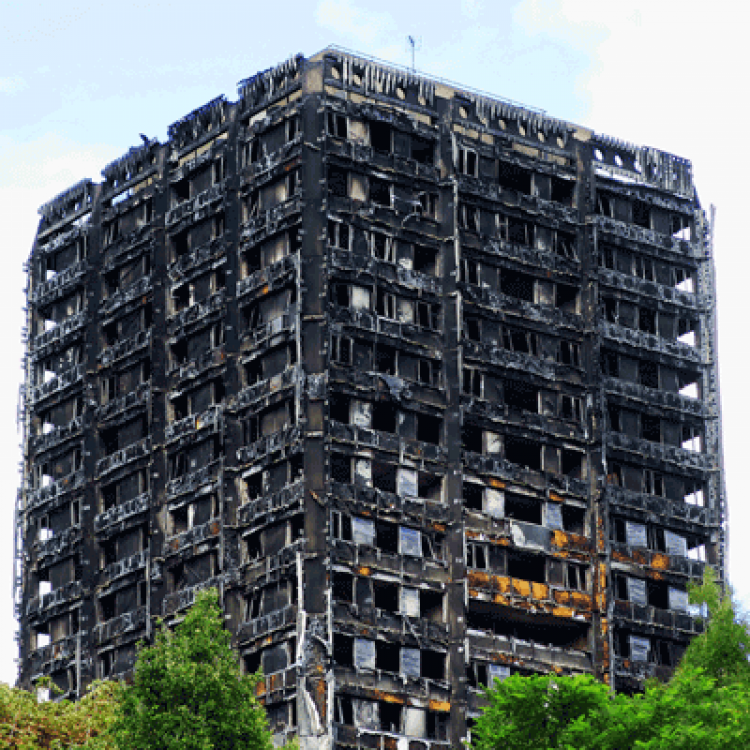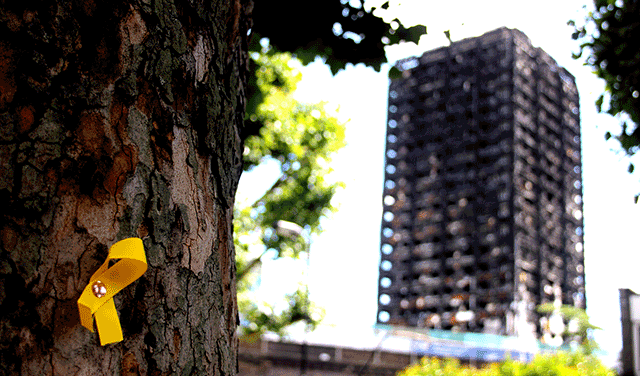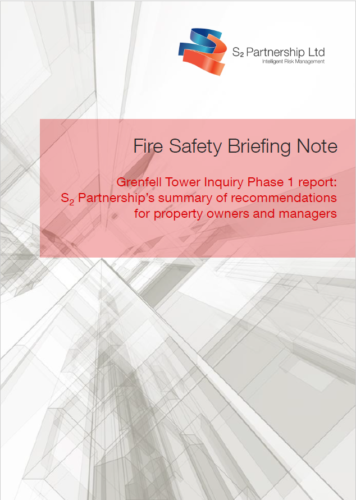Briefing: key themes from the Grenfell Tower Inquiry Phase 1 Report

The following briefing article from S₂ Partnership's technical team focuses on the key recommendations and salient points of the inquiry, which have been identified as being most relevant to property managers and owners. Their full briefing note can be downloaded here.
Since the publication of the Grenfell Tower Inquiry Phase 1 Report on 30 October 2019, the industry has been interpreting the content of the report and its recommendations. At this stage, recommendations are just that - recommendations - but they could potentially become law.
Key recommendations and expectations
As part of the inquiry, several key recommendations were identified, aimed at those who own and manage properties. These recommendations are designed to not only manage certain risk items within residential buildings, but to also ensure that fire and rescue services who attend these buildings are afforded suitable information to enable them to tackle any emergency scenarios and train their staff accordingly.
As there is no distinction between owners / managers in the inquiry, the expectation is that the parties co-operate and co-ordinate to ensure recommendations are implemented. Here we summarise some of the key points from the report:
High-rise building classification
The report indicated that the classification height of a high-rise building - currently any building where the highest floor level is above 18m - could be dropped to 11m, in line with recent changes made in Scotland. This would result in considerably more buildings being classified as 'high-rise'.
Removal of combustible cladding

Although not a recommendation within the report, it is taken as a given that building owners must be putting measures into place to ensure that any combustible cladding is removed from buildings. The expectation on landlords is that combustible cladding is removed by June 2020 - it is likely that the government will start naming and shaming building owners if they have not removed the cladding by this date.
Improved communication and information sharing
The report outlined that owners and managers are to provide their local fire and rescue services with up-to-date plans, in both paper and electronic form, of every floor of the building, identifying the location of key fire safety systems. Documentation, including information about the nature of any lift intended for use by the fire and rescue services, is to be stored in a premises' information box. While thorough examination and maintenance of lifts is already required by law, this is the first time the recommendation to report the result of inspections to local fire and rescue services is being made.
Installation of alarm systems
The recommendation for all high-rise residential buildings to be equipped with facilities for use by the fire and rescue services, enabling them to send an evacuation signal to the whole or a selected part of the building by means of sounders or similar devices could have significant implications for owners / managers. Currently, there is no requirement to install systems to enable evacuation signals to be sent to part, or all, of a building.
Secure storage of personal medical information
The recommendation for owners and managers of every high-rise residential building to be required by law to prepare personal emergency evacuation plans (PEEPs) for all residents whose ability to self-evacuate may be compromised and store such information in the premises' information box
could have significant implications for insurers. Under the EU General Data Protection Regulation (GDPR), this data is highly sensitive as it involves the storage of personal medical information and must be held securely.
Inspection of all fire doors
Detailed in the report is the recommendation that owners and managers are to carry out surveys of fire doors on every residential building that contains separate dwellings. This will include implementing formal checks on fire doors every three months. Complications may arise in gaining access to fire doors located outside landlord-demised areas; occupants will need to provide access.
 Looking ahead
Looking ahead
Currently, the findings from the Grenfell Inquiry are centred around residential buildings, predominantly those that are classified as high-rise. There are some implications of the findings relating to commercial buildings, particularly where they have sleeping occupants. However, the fire risk associated within these building is lower due to the nature of fire alarm systems in place and evacuation strategies.
It is likely that changes to the insurance landscape and asset protection will continue to develop, with further recommendations being made within the Grenfell Inquiry Phase 2 and the ongoing amendments to legislation and guidance. It can also be assumed that there will be increased scrutiny and expectations from the general public and other stakeholders, such as investors and the government
Download the Briefing Note
To access your free copy of the S₂ Partnership's full Briefing Note, please click here.
S₂ Partnership's dedicated team of fire safety experts provide risk assessments, training, guidance, fire engineering, and fire safety management systems to a range of organisations. We help clients develop robust fire safety solutions, providing the right support to protect lives, buildings, and businesses.
